Visit Ravello. Private, independent tourism initiative, not related to any civic institution.

Get the lowest rate for your Hotel in Ravello through Booking.com. Book now, pay later!
Amalfi Coast Ferry Schedule search. Find all the ferry routes, times and tickets!
SITA BUS Schedule guide. Find all the SITA BUS routes, times and tickets!
Welcome to Ravello
Perched on a hilltop more than 1200 feet (~365 meters) above the Mediterranean and far removed from the crowds that flock to the sea towns of Amalfi and Positano, Ravello is the hidden treasure of the Amalfi Coast.
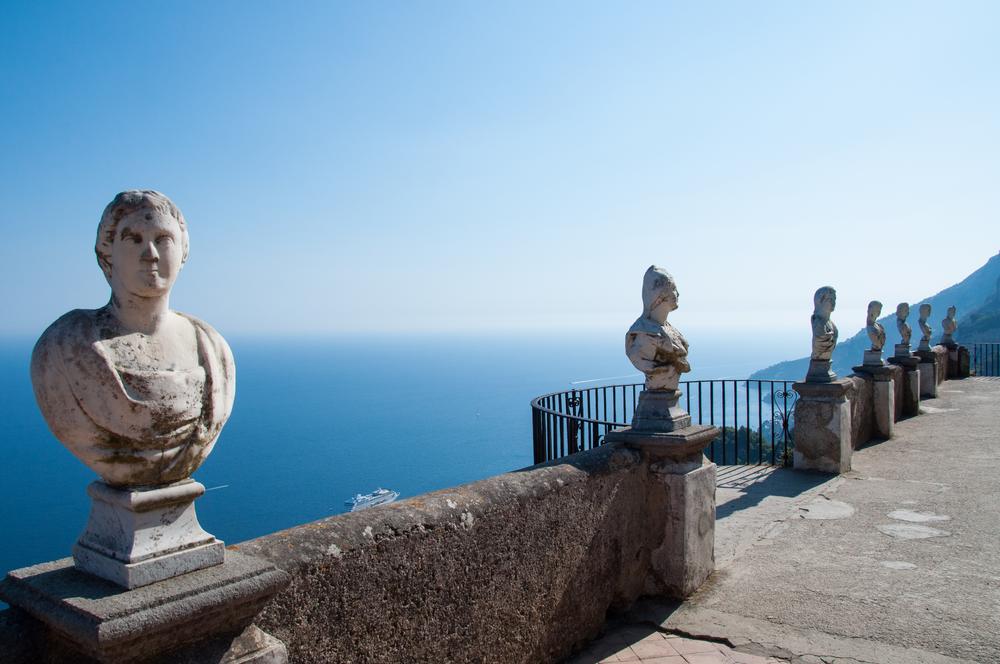
Its villas and vistas have enchanted visitors for centuries. Famous actors, authors, composers, and artists have come here for refuge and inspiration.
Now it’s your turn to discover Ravello. Come and enjoy the food, the wine, the music, and the beauty that make Ravello so very special.
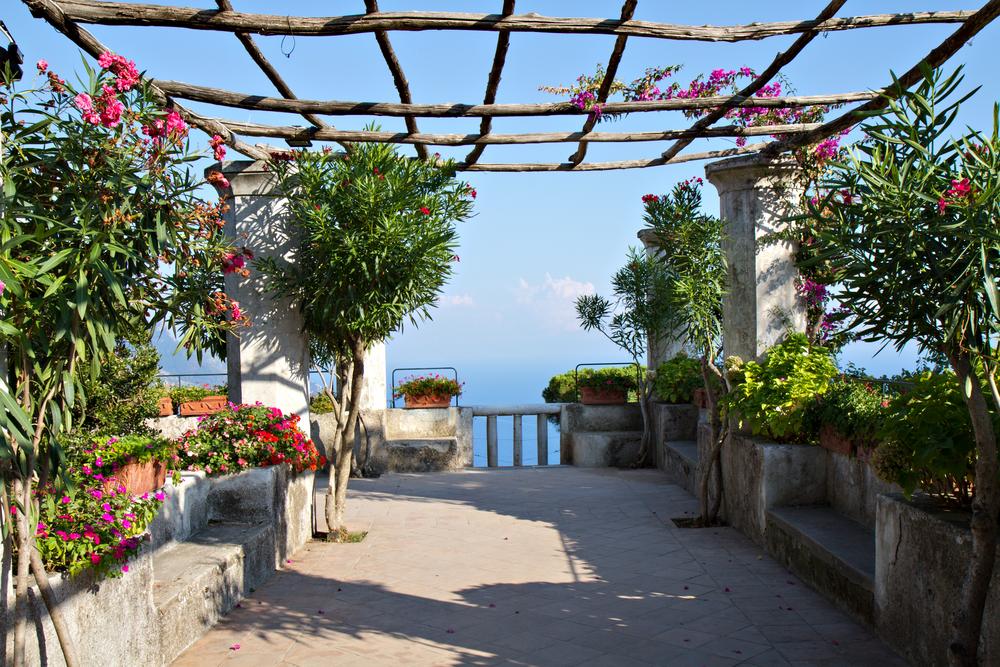
Little is known about the earliest inhabitants of the hills and promontory that now form the town of Ravello. High above the Mediterranean and cut off from the rest of Italy by the surrounding mountains and ravines, it would have been difficult to scratch out a living in such harsh and hilly terrain.
When the ancient Greeks first landed in this area about 2,600 years ago, they chose to settle roughly 70 kilometers south of Ravello and founded the town of Poseidonia, now known as Paestum, and there they constructed three temples that yet stand as an enduring tribute to Greek civilization.
But the earliest known inhabitants of Ravello and the neighboring towns were Romans. In the 1st century A.D., possibly after the eruption of Mount Vesuvius in 67 A.D.,a large Roman villa was built on the shores of present-day Minori, just a few kilometers east of Ravello.
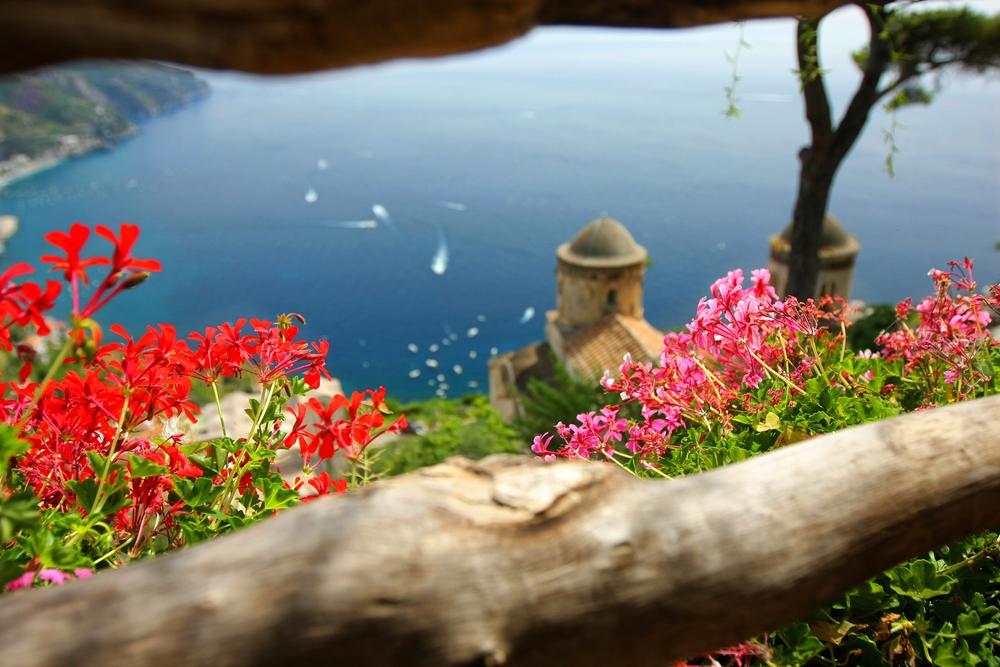
The records suggest that there were no roads in the area at the time; travel by land would have been exceedingly difficult. The earliest Romans, including the Pompeian nobleman who is believed to have constructed the villa now excavated in Minori, likely arrived by sea.
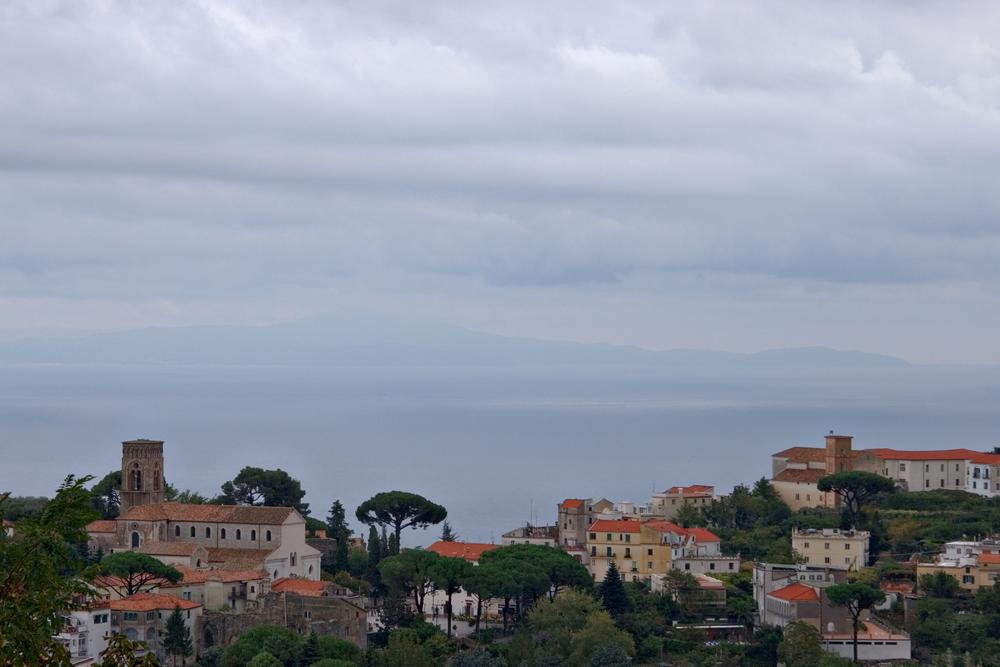
The town of Scala, across the valley from Ravello, was settled in the 4th century A.D. by Romans who were shipwrecked on their way to Constantinople. Among them were members of the Rufus family, Roman nobility whose descendants played a prominent role in the development of both Scala and Ravello.
Little more is known of this tiny Roman colony until it was formally absorbed into the Amalfi Republic in 1070. Shortly thereafter, in the 12th century, its residents rebelled against Amalfi and acquired the name of “Rebellum”.
In medieval times, Ravello produced several successful merchants, who built much of what we recognize today as Ravello, including the Villa Rufolo, the palazzos, The Duomo (Cathedral), and the churches of Santa Maria a Gradillo and San Giovanni del Toro. Their architectural contributions transformed Ravello from a sleepy mountain hamlet into a medieval wonder.
By the 13th century, Ravello was widely admired for its gardens, architecture, and breathtaking vistas.
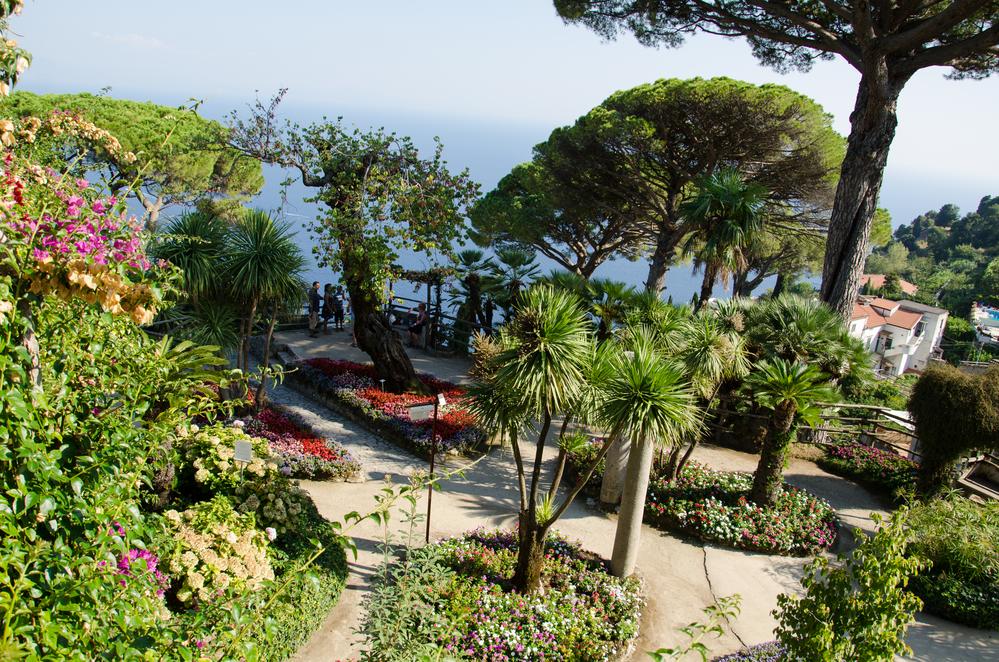
It’s hard to imagine today the former scale of Ravello. Prior to a plague that swept the region in 1656, it had, by some estimates, nearly 40,000 residents.
Today, it has fewer than 3,000. Scala, Ravello’s immediate neighbor, reportedly had more than 100 towers and major fortifications before Pisan forces destroyed much of the town in the 12th century, including the Basilica of Sant’Eustachio, the majestic ruins of which still stand.
Ravello was also a fortified town, with at least two castles, but like Scala, little is left of the former battlements.
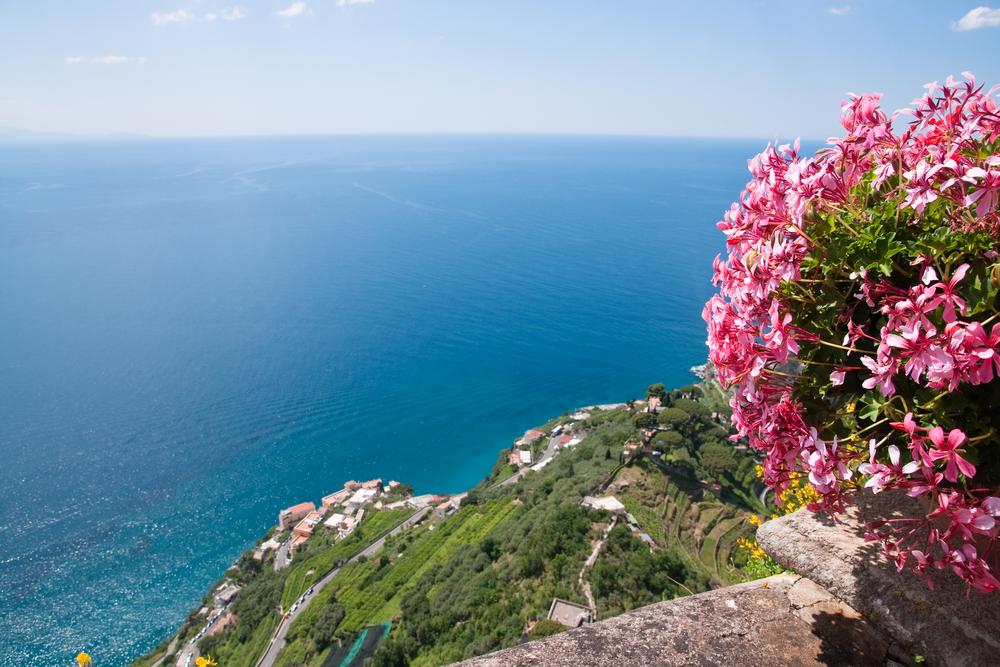
Fortunately for us, most of the churches and villas for which Ravello became famous survived the Pisan invasion and much of what survived has been restored to its former glory. Not everything has been saved, but Ravello’s beauty and grandeur have endured, and its allure has only grown with time.
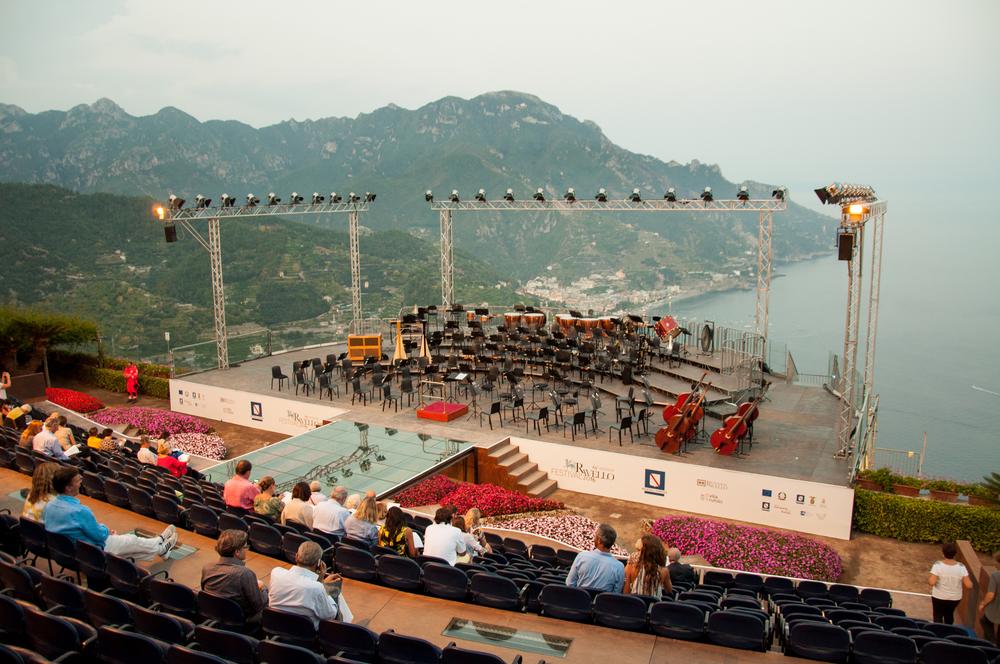
Today, thanks to its summer music festival, Ravello is known around the world as la città della musica, the city of music.

Author: Robert Walker
Robert Walker, a lawyer, economist, and consultant who has worked in Washington, D.C. for over 30 years, is the author of Discovering Ravello, a short booklet on the history and attractions of Ravello. He and his wife, Chris Apel, first visited Ravello nearly 25 years ago, and have been frequent visitors ever since. His wife is an award winning artist who recently created a website (www.discoveringravello.com) to showcase her paintings of Ravello. He and his wife both lecture on Ravello. They live in Alexandria, Virginia.
Attractions in Ravello
...not to be missed!